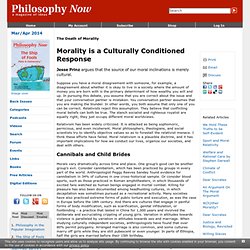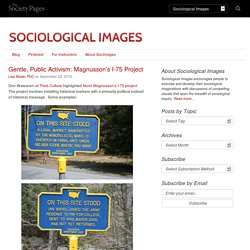

No Impact Project. The International Rescue Committee. Morality is a Culturally Conditioned Response. The Death of Morality Jesse Prinz argues that the source of our moral inclinations is merely cultural.

Suppose you have a moral disagreement with someone, for example, a disagreement about whether it is okay to live in a society where the amount of money you are born with is the primary determinant of how wealthy you will end up. In pursuing this debate, you assume that you are correct about the issue and that your conversation partner is mistaken. You conversation partner assumes that you are making the blunder. In other words, you both assume that only one of you can be correct. Vegetarian Quotes.
Organized-Crime.gif from adbusters.org. Environmentalism without Veganism: Reasons not to Be Vegan. Why the sustainable path may not lead to veganism.

For nearly a decade, I was an evangelical vegan – a born-again, plant-powered fundamentalist, resplendent in my animal-rights halo and heavenly faux-fur robes. I fiercely guarded my inflexible morality, never daring to reexamine the orthodoxy’s most illogical presuppositions. Yes, meat is still murder and factory farms still cause animal cruelty and suffering – none of that has changed. Somewhere along the way, however, veganism stopped being synonymous with ethical treatment of animals and people. Over the past six months, I’ve come to believe that strict dogma is a drag. Dontaskdonttell.png from coffeeghost.net.
Gentle, Public Activism: Magnusson's I-75 Project & Sociological... Don Waisanen at Thick Culture highlighted Norm Magnusson’s I-75 project.

The project involves installing historical markers with a primarily political instead of historical message. Some examples: About the project, Magnusson writes: …unlike most artworks on social or political themes, these markers don’t merely speak to the small group of viewers that seek out such work in galleries and museums; instead, they gently insert themselves into the public realm. “Are they real?”